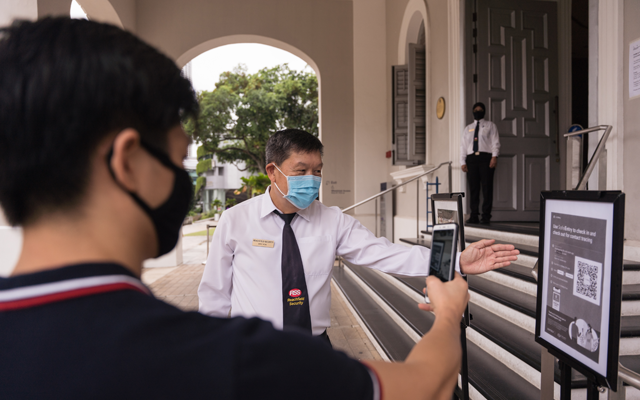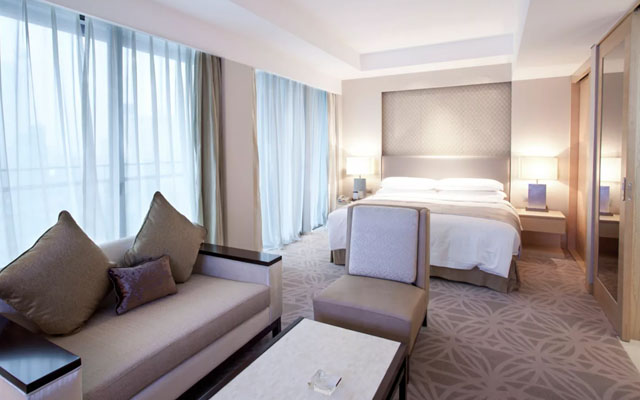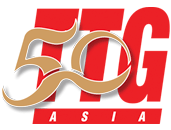As tourist attractions in Singapore start to reopen their doors, they are reshaping their operations in line with shifting health and safety expectations post-pandemic.
• Singapore attractions fine-tuning operations to suit these pandemic times
• Places of interest double down on hygiene standards to win back visitors
• Tourism operators pivot to focus on domestic market

As tourist attractions in Singapore start to reopen their doors, they are reshaping their operations in line with shifting health and safety expectations post-pandemic.
At most attractions, capacity is capped at 25 per cent to manage visitor volume. Other safety mandates include safe distancing measures, temperature checks, and SafeEntry system for contact tracing. Many tourist spots have also adopted SG Clean sanitation standards, or enhanced cleaning and disinfection of frequent touchpoints in common areas.
In addition, many attractions are now encouraging online ticket purchases and e-payment methods to minimise physical contact.
At the reopened National Museum of Singapore (NMS), shared multimedia content, guided tours and programmes are temporarily unavailable. Instead, visitors can access exhibition captions and multimedia content in the four official languages on their personal devices, shared museum director Chung May Khuen.
For now, the museum has also removed headphones, audio guides and reusable translation text guides, and closed off all interactive exhibitions, to minimise touch.
Meanwhile, other attractions in Singapore, whose nature of operations seem tailored for safe distancing, has only had to make minor tweaks to their operations.
Case in point: Virtual Room Singapore, a multi-player VR arcade, which reopened on July 4. “Our experience has always been very safe and socially distanced so there won’t really be any differences to how people experience our attraction,” said its director Rebecca Assice.
“Our players each have their own 3m by 3m dedicated room, so they have no physical interaction with anyone else. They join and interact with only their friends in the virtual world, where they can see, hear and collaborate together.”
For Flight Experience Singapore, a flight simulator attraction which reopened on July 9, while the core experience remains unchanged, there will be new crowd control measures in place to suit these pandemic times, according to Alwin Yong, a flight simulator instructor.
He elaborated: “In the past, we could accommodate a bigger group of family or friends in the cockpit to watch their loved ones take control of the Boeing 737. Now, with the new safe distancing measures in place, the maximum capacity in the simulator has been reduced to three, excluding our instructor.
“The (additional members) of the group will have to remain outside the flight deck at the lounge area where they can enjoy a snack and a cup of coffee or tea, while enjoying the live feed on TV. In fact, the experience is more exclusive now as other groups of customers will not be admitted to the lounge area until their allocated timeslot.”
The attraction will also hold off hosting large school, corporate and team bonding events until further notice, Yong added.
More stringent safety protocols
Apart from the aforementioned hygiene protocols that have become de rigueur for every tourist attraction by now, some have gone the extra mile to stay sterile.
For the reopened Singapore Cable Car – part of the hilltop destination Faber Peak which also houses F&B outlets Arbora and Dusk Restaurant & Bar – it has adopted additional safe distancing measures, shared Buhdy Bok, managing director of One Faber Group.
“The interior of the cabin is sanitised after every ride and there will be no sharing of cabins among different groups of guests. Social distancing and capacity limits could contribute to a more exclusive, serene experience for guests… Our guests will enjoy not only more spacious surroundings at Faber Peak, but also their own private cable car cabins,” he added.
Some of its staff members have also been trained as Safe Management Officers to monitor the on-site implementation of the safety measures, and conduct regular inspections.

At Flight Experience Singapore, a 15-minute buffer between customers is enforced to allow for thorough cleaning and disinfecting of frequent touchpoints in the simulators before and after each experience, shared Yong.
In the Boeing 737 simulator, the communication headsets are wiped and disinfected before and after each use. In addition, disposable nonwoven covers are fitted over the leatherette earcups for each customer. A HEPA filter is also present in the flight deck to constantly purify the air to reduce airborne transmission risk.
As well, the facial sponge cushion on the VR headsets have been replaced with a washable non-porous silicone gel cushion, wiped and disinfected before and after each use. Disposable eye masks are also provided for each customer to wear under the VR headset.
Similarly, customers at Virtual Room Singapore are required to wear a soft disposable ninja mask to avoid direct contact with the headset, shared Assice. They also have to put on their own equipment, instead of being assisted by game masters.
The pivot to localism
With borders closed to most foreigners, attractions in Singapore are shifting strategies to make the most of what’s shaping up to be a majorly domestic tourism season.
Buhdy said they have pivoted their plans and campaigns for this year to target locals who have not taken the cable car in years, including families on day outings and couples planning romantic dinners with their Cable Car Sky Dining.
He elaborated: “We are planning a series of exciting local promotions for our attractions and working with partners to organise a series of events including yoga, mental wellness and art jamming within the beautiful natural surroundings of Faber Peak.”
Flight Experience Singapore, which traditionally has been heavily reliant on tourism, found the need to pivot as tourist footfall started to dwindle rapidly with the onset of Covid-19.
“We turned to online marketing to promote our experiences to the local market using targeted Facebook and Google ads. The campaign was a success – it more than made up for the significant increase in cost of online marketing and allowed us to connect with a large base of local consumers that we typically had not reached out to,” said Yong.

While most companies are downsizing their operations in the current economic climate, Yong shared that they are expanding with their new Virtual Reality flight simulators.
Instead of adding them to their existing location at the Singapore Flyer alongside their Boeing 737 flight simulator, the 12-year-old company opted to site them at their second outlet, which they set up in Funan Mall this April to capture the higher proportion of local traffic there.
Said Yong: “The decision was made to locate the new VR Experience at Funan Mall as we fit into their theme of experiential shops with our unique blend of retail and high-tech experiences, and we hope our commitment to cater to local consumers would bear fruit and forge a more resilient business model that is less dependent on tourist arrivals.”
Correction: In the original post, we made a mistake by describing Faber Peak as an entertainment complex. It is not, and is a hilltop tourist destination instead.




















